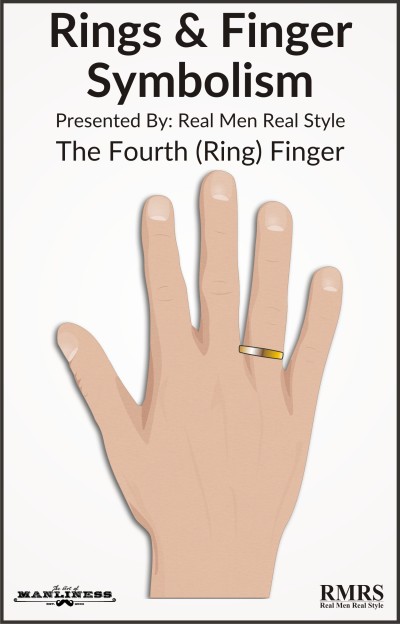Answer
Jun 21, 2018 - 02:06 PM
Traditionally, the ring finger on the left hand has always been the location for a wedding band. Stemming from a Tudor belief from the 16th-century, the left-handed ring finger was believed to be connected to the heart by a vein; therefore, wearing a ring on that finger signified to the world that the wearer had a “claim to their heart” in the form of a fiancé or a husband (men didn’t start to wear wedding rings until centuries later).
However, just as the ring finger on the left hand signifies love, fidelity and monogamy, the ring finger on the right hand has also developed a code of its own. As the new millennium approached, diamond rings began to suddenly shift to the right hand – and the multiple meanings behind this shift are fascinating.
The Fourth (Ring) Finger
Image Source: https://www.artofmanliness.com/articl...
In much of North and South America, the ring finger is most commonly associated with wedding symbolism: a band on the right fourth finger indicates engagement, while a band on the left fourth finger indicates marriage.
Nearly all men opt for a simple ring for their wedding band; a very small percentage also don an engagement ring (called a “management” ring) before exchanging vows. In either case, a large ring with a jewel or a three-dimensional design is far less likely to be taken for something related to your marital status.
Gay and Lesbian Marriage.
Instead of wearing wedding bands on their left hands, gay and lesbian couples often choose to wear rings on their right hands instead. Within gay and lesbian communities, the right-handed ring is an instantly recognizable marker of a monogamous relationship, and even marriage within the states that have legalized it.
See more at: https://www.25karats.com/articles/wed...


Add New Comment